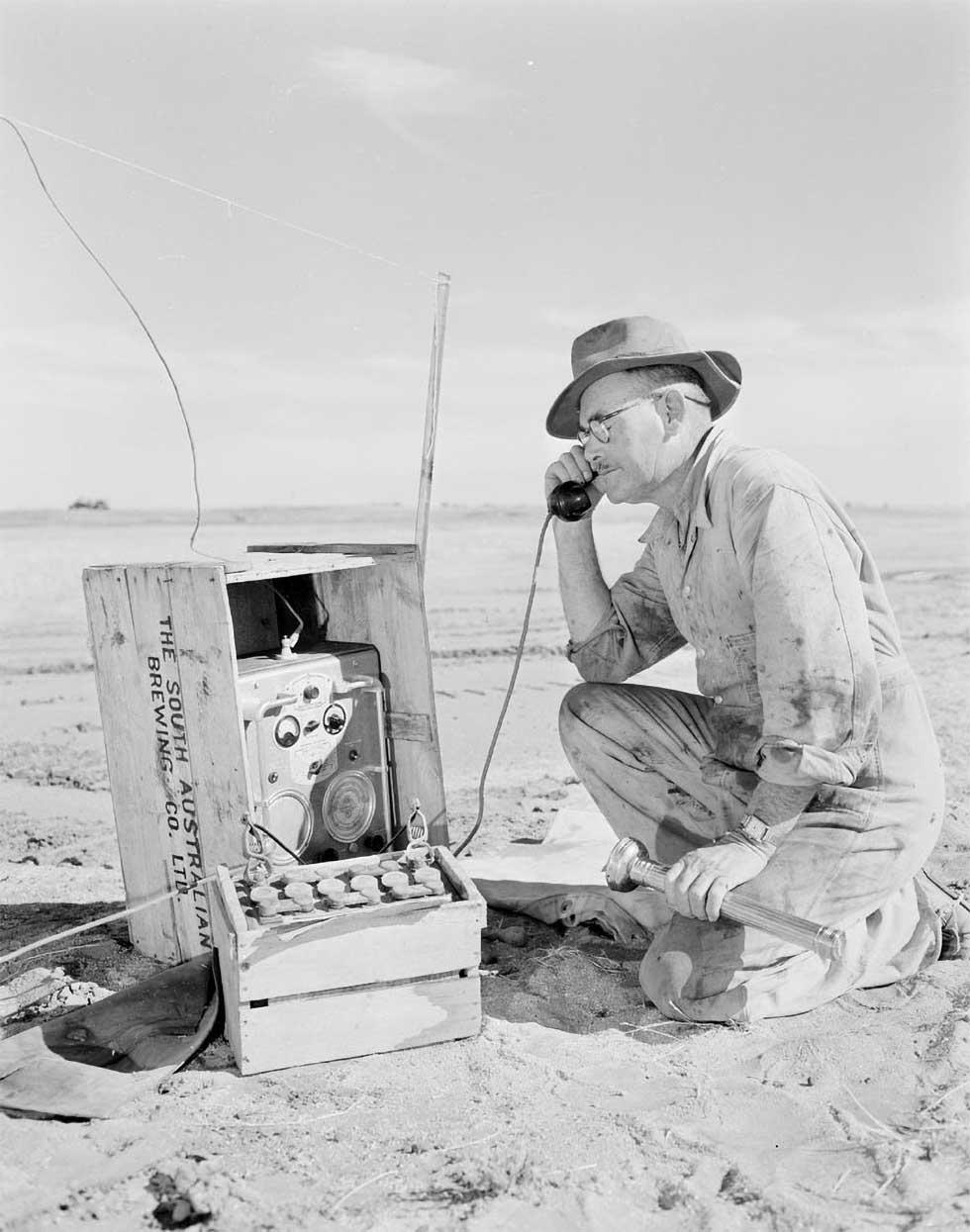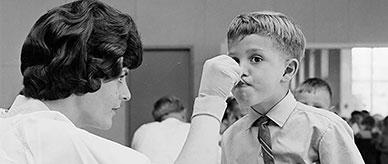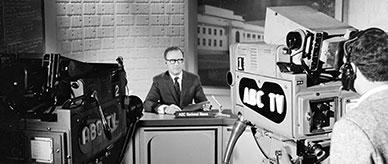


About this record
This is a black-and-white photograph of George Alder in a flat, dry and dusty paddock kneeling beside the first portable radio telephone in the outback, contacting the Flying Doctor Service in Broken Hill.
Educational value
- Illustrates a British-made Dolphin radio telephone operated by a 12-volt battery two-way radio – this equipment was regarded as a necessity on outback properties for communication between neighbours and communities and with essential services.
- Shows communication with the Flying Doctor Service, which was established in 1928 as the Aerial Medical Service, developed on a national basis in the 1930s to become the Flying Doctor Service of Australia in 1942 and then the Royal Flying Doctor Service in 1955 – it was the first comprehensive aerial medical organisation in the world and remains unique for the range of primary health care and emergency and community services it provides to rural and isolated communities and properties in outback Australia.
- Attests to the importance of radio communications and radiotelephony in the outback, as the cost of laying telephone lines in such areas was (and remains) prohibitive – the introduction of the vast radio network that the Aerial Medical Service provided led to the development of other services such as the School of the Air.
- Shows a landscape affected by drought in 1953 in outback Australia more than 160 kilometres from Broken Hill in western New South Wales – there is no vegetation apparent from the foreground to the horizon.
- Shows men's outdoor work clothes in 1953 – Alder is wearing well-used overalls and a hat to provide protection from the sun.
Acknowledgments
Learning resource text © Education Services Australia Limited and the National Archives of Australia 2010.
Related themes
Need help with your research?
Learn how to interpret primary sources, use our collection and more.


